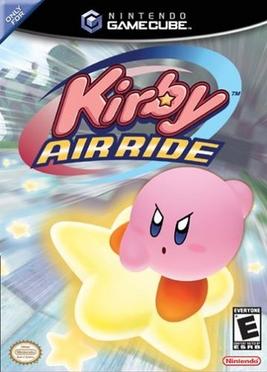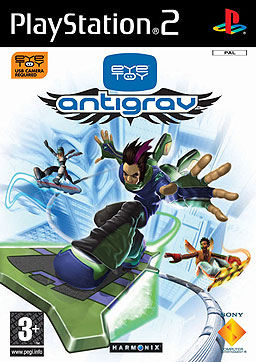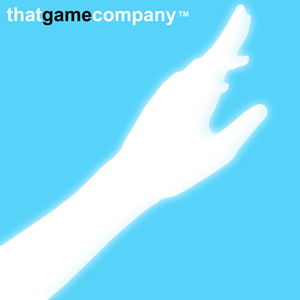
Marble Madness is an arcade video game designed by Mark Cerny and published by Atari Games Inc. in 1984. It is a platform game in which the player must guide a marble through six courses, populated with obstacles and enemies, within a time limit. The player controls the marble by using a trackball. Marble Madness is known for using innovative game technologies: it was Atari's first to use the Atari System 1 hardware, the first to be programmed in the C programming language, and one of the first to use true stereo sound.

Carmageddon is a vehicular combat video game released for personal computers in 1997. It was produced by Stainless Games and published by Interplay Productions and Sales Curve Interactive. It was ported to other platforms, and spawned a series.

Unreal Tournament 2003 is a first-person arena shooter video game developed by Epic Games and Digital Extremes, and published by Infogrames under the Atari brand name. The game is part of the Unreal franchise, and is a sequel to 1999's Unreal Tournament. Like its predecessor, the game is designed mainly for multiplayer gaming.

SubSpace is a 2D space shooter video game created in 1995 and released in 1997 by Virgin Interactive which was a finalist for the Academy of Interactive Arts & Sciences Online Game of the Year Award in 1998. SubSpace incorporates quasi-realistic zero-friction physics into a massively multiplayer online game.

Kirby Air Ride is a 2003 racing video game starring Kirby, developed by HAL Laboratory and published by Nintendo for the GameCube.

Katamari Damacy is a third-person puzzle-action video game developed and published by Namco for the PlayStation 2. It was released in Japan in March 2004 and in North America in September 2004. Designer Keita Takahashi struggled to pitch the game to Namco's superiors, eventually seeking student aid from the Namco Digital Hollywood Game Laboratory to develop the project for less than US$ 1 million. As director, Takahashi emphasized concepts of novelty, ease of understanding, and enjoyment.

Wipeout Pure is a futuristic racing video game developed by Studio Liverpool and published by Sony Computer Entertainment for the PlayStation Portable. It was released in 2005 on 24 March for North America, on 7 April in Japan and on September 1 in Europe. In North America and Europe, it was a launch title for the platform.

Crash Team Racing is a 1999 kart racing video game developed by Naughty Dog and published by Sony Computer Entertainment for the PlayStation. It is the fourth installment in the Crash Bandicoot series. The game's story focuses on the efforts of Crash Bandicoot, Doctor Neo Cortex, and other ragtag team of characters in the Crash Bandicoot series, who must race against the egomaniacal Nitros Oxide to save the Earth from destruction. In the game, players can take control of one of fifteen Crash Bandicoot series characters, though only eight are available at first. During the races, offensive and speed boosting power-ups can be used to gain an advantage.

EyeToy: AntiGrav is a hoverboard game by Harmonix, released in November 2004 for the PlayStation 2. It was touted as the first "real" game for EyeToy targeted to more seasoned gamers. The earlier games such as Play and Groove were geared towards younger players for family or party fun. Unlike the earlier EyeToy games, the player's image is not shown inside the Antigrav game. Instead, the player's movement is reflected in the animated character in the game. The player moves their body to guide the on-screen character through a track. Some obstacles require the player to crouch or jump. Up to 4 players are supported. The game was released in the U.S. in November 2004, and in PAL in March 2005.

Dragon Ball Z: Budokai 2, released as Dragon Ball Z2 in Japan, is a fighting video game developed by Dimps based upon the anime and manga series, Dragon Ball Z, and a sequel to Dragon Ball Z: Budokai. It released for the PlayStation 2 in 2003 and for the GameCube in 2004 and was published in Japan and Europe by Bandai and in North America, Australia and South Africa by Atari SA.

Kirby's Dream Course is a 1994 miniature golf video game developed by HAL Laboratory and Nintendo EAD and published by Nintendo for the Super Nintendo Entertainment System (SNES). A spin-off of the Kirby series and the first released for the SNES, players control the pink spherical character Kirby through a series of courses by launching him towards the goal hole at the end. Kirby can hit enemies to collect power-ups that grant him unique abilities, such as those that allow him to destroy certain obstacles or fly around the level.

SSX 3 is a snowboarding video game developed by EA Canada and published by Electronic Arts under the EA Sports BIG label. The game was originally released on October 21, 2003, for the PlayStation 2, Xbox, and GameCube. It was later ported to the Game Boy Advance by Visual Impact on November 11, 2003, and to the Gizmondo by Exient Entertainment on August 31, 2005, as a launch title. It is the third installment in the SSX series.

NBA Ballers is a 2004 streetball simulation video game developed and published by Midway. The game features fictional NBA analyst, Bob Benson and MC Supernatural as the commentators. Most of the moves in the game were from amateur basketball players who provided some of their moves for the game. Stephon Marbury is on the cover.

Mindball is created by the Swedish developer Interactive Productline IP AB.

Zuma is a 2003 tile-matching puzzle video game developed by Oberon Media and published by PopCap Games. It was released for a number of platforms, including PDAs, mobile phones, and the iPod.

Flow is an independent video game created by Jenova Chen and Nicholas Clark. Originally released as a free Flash game in 2006 to accompany Chen's master's thesis, it was reworked into a 2007 PlayStation 3 game by his development studio, Thatgamecompany, with assistance from Santa Monica Studio. SuperVillain Studios developed a PlayStation Portable version of the game in 2008, and PlayStation 4 and PlayStation Vita versions in 2013. In Flow, the player navigates a series of two-dimensional (2D) planes with an aquatic microorganism that evolves by consuming other microorganisms. The game's design is based on Chen's research into dynamic difficulty adjustment at the University of Southern California's Interactive Media Division, and on psychologist Mihaly Csikszentmihalyi's theoretical concept of mental immersion or flow.

Thatgamecompany, Inc. is an American independent video game development company founded by University of Southern California students Jenova Chen and Kellee Santiago in 2006. The company was a developer for Sony Computer Entertainment, contracted to create three downloadable games for the PlayStation 3's PlayStation Network service, and has since secured independent funding. The first of their games is a remake of Chen's award-winning Flash title Flow, with enhanced visuals and sound, added multiplayer modes and compatibility with the PlayStation 3's motion-sensitive controller. The title was released on the PlayStation Store in 2007. The company's second PlayStation 3 game, Flower, was released on the PlayStation Store in 2009, and their third game, Journey, was released in March 2012 on the PlayStation Store. Their fourth game, Sky: Children of the Light, was released in July 2019 on iOS and in April 2020 on Android. Later, it released on the Nintendo Switch in June 2021 and on PlayStation 4 in December 2022.

Peggle is a casual puzzle video game developed by PopCap Games. Initially released for Microsoft Windows and Mac OS X systems in 2007, it has since had versions released for Xbox Live Arcade, PlayStation Network, the Nintendo DS, Windows Mobile, iOS, Zeebo, and Android; the game has also been ported as a Java application, and an extended minigame incorporated into the massively multiplayer online game World of Warcraft. A sequel was released in September 2008, titled Peggle Nights. PopCap, a subsidiary of Electronic Arts, announced Peggle 2 at E3 2013.

Wipeout HD is a futuristic racing video game developed by Studio Liverpool and published by Sony Computer Entertainment for the PlayStation 3. It is the eighth installment of the Wipeout series and was first released on the PlayStation Network on 25 September 2008 in both Europe and North America, and on 29 October in Japan. A major expansion pack titled Wipeout HD Fury was released worldwide via the PlayStation Network worldwide on 23 July 2009. A retail version was later made available in Europe on 16 October. Both Wipeout HD and its HD Fury Expansion are playable in 3D when connected to a 3D TV.

Overcooked is a 2016 cooking simulation video game developed by Ghost Town Games and published by Team17. In a local cooperative experience, players control a number of chefs in kitchens filled with various obstacles and hazards to rapidly prepare meals to specific orders under a time limit. The game was released for PlayStation 4, Windows, and Xbox One in August 2016. A Nintendo Switch version was released in July 2017.




















